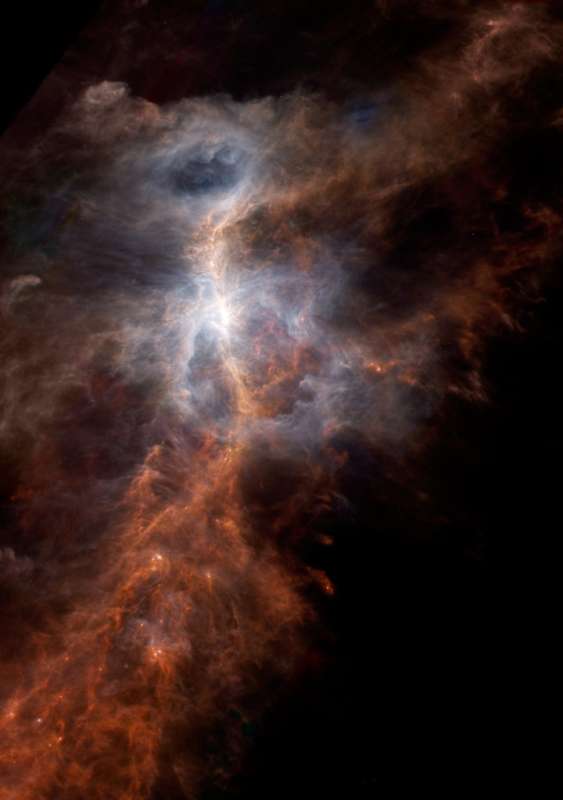
|
Credit & Copyright: ESA/Herschel/PACS/SPIRE
Explanation:
This
dramatic image peers within M42, the Orion Nebula,
the closest large star-forming region.
Using data at infrared wavelengths from the
Herschel
Space Observatory, the false-color composite
explores the natal cosmic cloud
a mere 1,500 light-years distant.
Cold, dense filaments
of dust that
would otherwise be dark at visible wavelengths are shown
in reddish hues.
Light-years long, the filaments weave together
bright spots that correspond to regions of collapsing
protostars.
The brightest bluish area near the top of the frame is warmer
dust heated by the hot Trapezium
cluster stars that also power the nebula's visible glow.
Herschel data has recently indicated
ultraviolet starlight from the hot newborn stars
likely contributes to the creation of
carbon-hydrogen molecules,
basic
building blocks of life.
This Herschel image spans about 3 degrees on the sky.
That's about 80 light-years at the distance of the Orion Nebula.
|
January February March April May June July August September October November December |
| |||||||||||||||||||||||||||||||||||||||||||||||||||||||
NASA Web Site Statements, Warnings, and Disclaimers
NASA Official: Jay Norris. Specific rights apply.
A service of: LHEA at NASA / GSFC
& Michigan Tech. U.
Based on Astronomy Picture
Of the Day
Publications with keywords: M 42 - Orion Nebula
Publications with words: M 42 - Orion Nebula
See also:
- Orion and the Running Man
- APOD: 2025 August 13 Á Trapezium: In the Heart of Orion
- APOD: 2025 April 20 Á The Orion Nebula in Visible and Infrared
- APOD: 2024 November 4 Á M42: The Great Nebula in Orion
- APOD: 2024 September 10 Á Horsehead and Orion Nebulas
- Trapezium: At the Heart of Orion
- APOD: 2023 October 10 Á Hidden Orion from Webb
